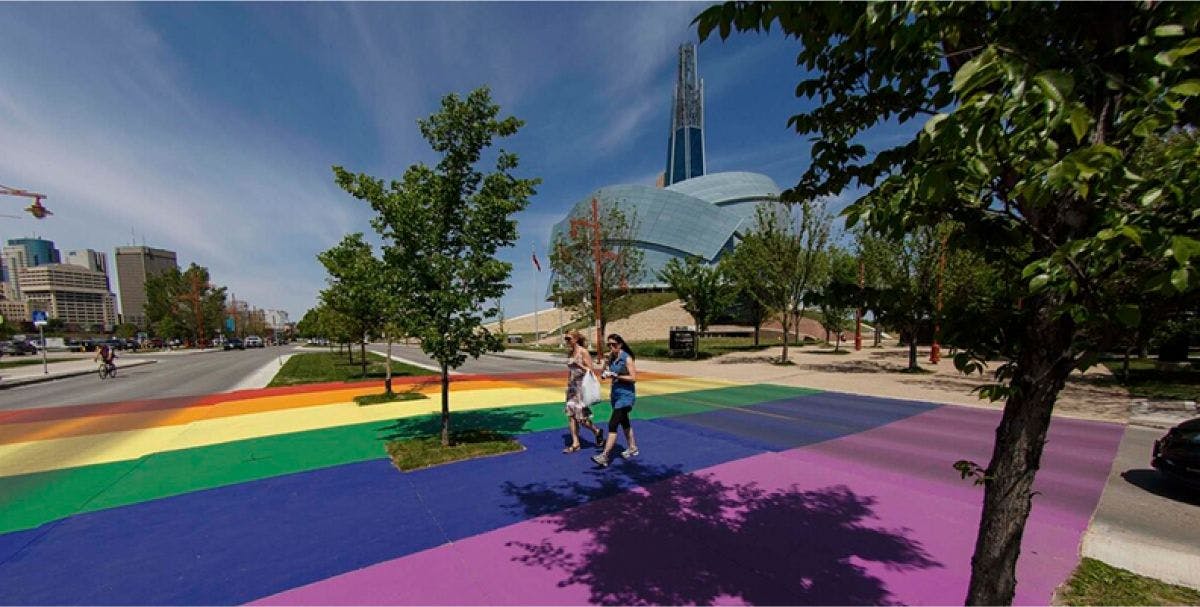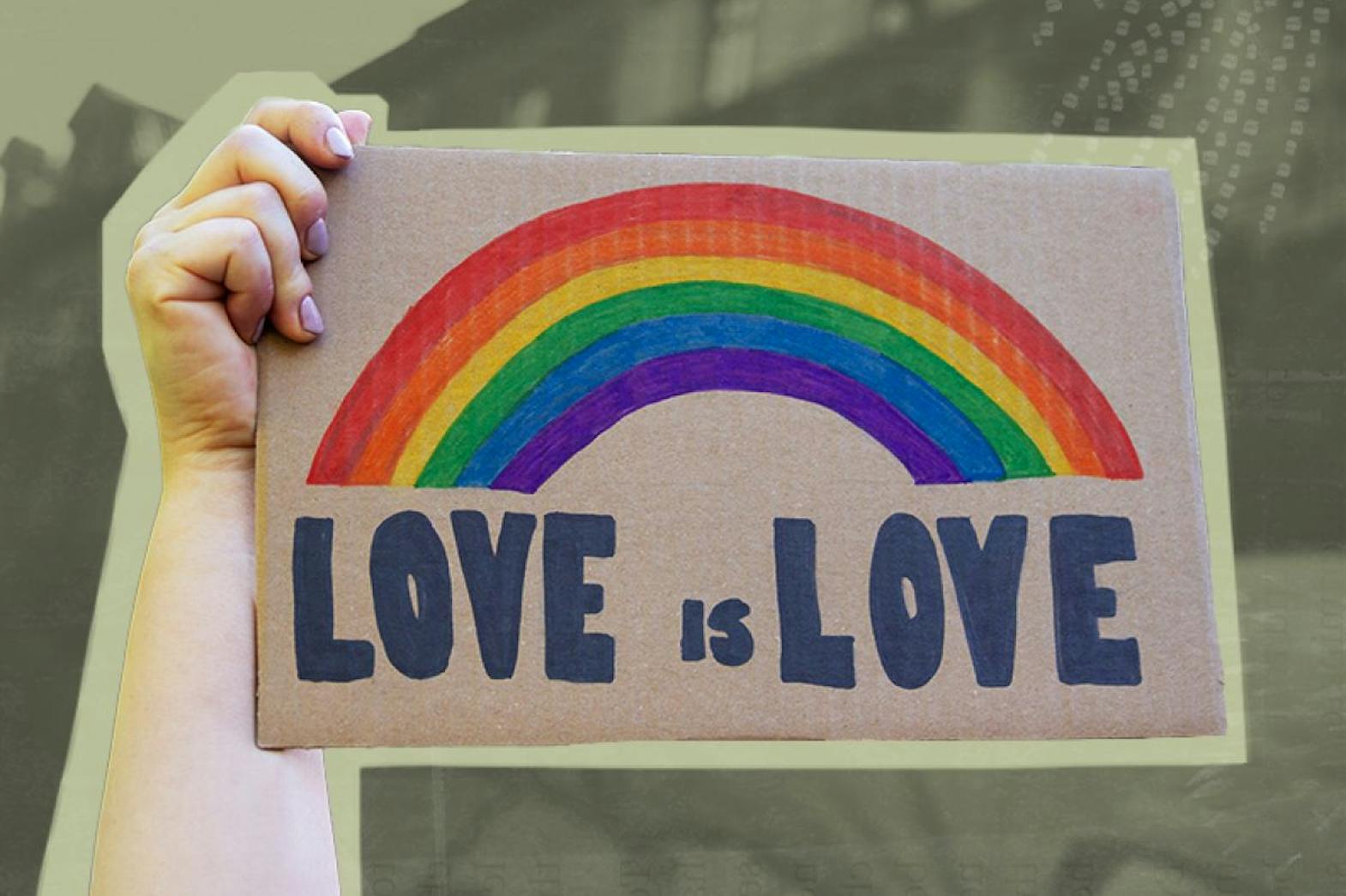Though Winnipeg doesn’t have a dedicated ‘gaybourhood’ like Toronto’s Gay Village, Vancouver’s Davie Street, or Montreal’s Le Village Gai, the city has a rich 2SLGBTQIA+ history.
As early as the 1920s, Winnipeg’s downtown was home to a few underground meeting places like Gio’s at 275 Sherbrook Street, the docks near Alexander Street, Mount Royal at 186 Higgins Avenue, and ‘The Hill’ behind the Legislature. In the 1970s and 1980s, when police raids and riots were occurring in other large Canadian cities, Winnipeg saw more tolerance from authorities. That’s not to say there wasn’t discrimination or violence, but there was no inciting incident comparable to Stonewall in New York. Rather, Winnipeg saw incremental progress through several key events. Below is a brief history of some of the ways Winnipeg’s 2SLGBTQIA+ community has fought to push the envelope.
1968 - The Sildor Ballroom hosted the first drag ball in Winnipeg.
1970 - Club 654 opened, one of the first prominent gay bars in Winnipeg.
1974 - Chris Vogel and Richard North were married in the Unitarian Church of Winnipeg and became the first same-sex couple to marry in a Canadian Church, though they are still fighting to have the Government of Manitoba register their marriage.
1980 - Winnipeg pioneered a TV program called Coming Out! that was one of the first to feature openly gay people on television.
1982 - Winnipeg’s first gay community centre, Giovanni’s Room (or Gio’s for short), opened.
1987 - Following the incorporation of 2SLGBTQIA+ rights into the Human Rights Code in Manitoba, Winnipeg sees its first Pride parade on August second.
1990 - The term ‘Two-Spirit’ was coined at the Intertribal Native American, First Nations, Gay and Lesbian American Conference, which took place in Winnipeg.
1998 - Glen Murray was elected Mayor of Winnipeg, making him the first openly gay mayor of a major city in North America.
2017 - Andrew McLaren created a rainbow pedestrian crossing at the Forks, framing the Canadian Museum for Human Rights. Installed by volunteers from the 2SLGBTQIA+ community and funded by the Forks and the Manitoba Teacher’s Society, this act of queer placemaking was the first of its kind in Winnipeg.
Pride celebrations have changed significantly since Winnipeg’s inaugural parade. In 1987, two hundred and fifty people marched in the city’s first Pride parade in an important act of solidarity, but many wore paper bags over their heads to protect their identity for fear of discrimination. These days, we would expect our streets to be brimming with people being authentically themselves, openly celebrating the 2SLGBTQIA+ community, and continuing to push for progress. Though pandemic restrictions may prevent us from gathering this year, there are still ways that you can celebrate the 2SLGBTQIA+ community and re-commit yourself to the fight for justice.

Add your pronouns.
As many of us celebrate pride virtually this year, we can take this opportunity to make our online presence an inclusive one. A simple way to do this is to include your personal pronouns in your screen name on online platforms like Zoom, Instagram, or LinkedIn. You may have noticed that LinkedIn recently introduced a feature that prompts you to enter these details. Even if you identify as cisgender, including these pronouns creates space for others to share their own pronouns.
Practice using gender-inclusive language.
You can also consider working on your vocabulary to avoid binary language. To model gender-inclusive language, try to use terms like ‘parent’ instead of ‘mother/father,’ ‘child’ instead of ‘son/daughter,’ or ‘partner’ instead of ‘husband/wife.’ When addressing a group, you could use ‘folks,’ ‘team,’ ‘everyone,’ or ‘friends’ rather than ‘ladies and gentlemen.’ And, when referencing people in professional roles, try to use gender-neutral terms like ‘salesperson,’ ‘server,’ or ‘firefighter’ to be more inclusive.
Educate yourself.
Lastly, this blog is intended as a starting point. Pride month is a great opportunity to seek out 2SLGBTQIA+ creators, particularly BIPOC and trans voices that are typically underrepresented, in your learning on this topic. Below are links to some 2SLGBTQIA+ media that you can consume from the comfort of your couch.
CBC has released a podcast playlist featuring five podcasts titled ‘Celebrating LGBTQ Trailblazers of the past and present.’
Mashable has compiled a list of thirty-four essential LGBTQ films to stream this Pride Month.
Social Justice Books has a great list of 2SLGBTQIA+ reads. You can look for some of these items at the Rainbow Resource Centre’s library.
How will you be celebrating Pride Month this year?




